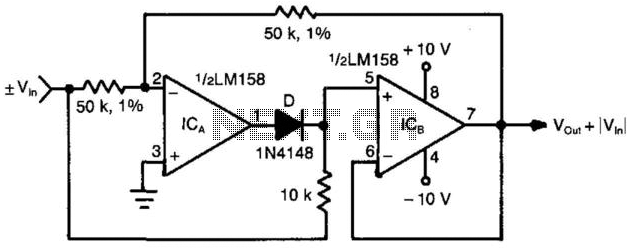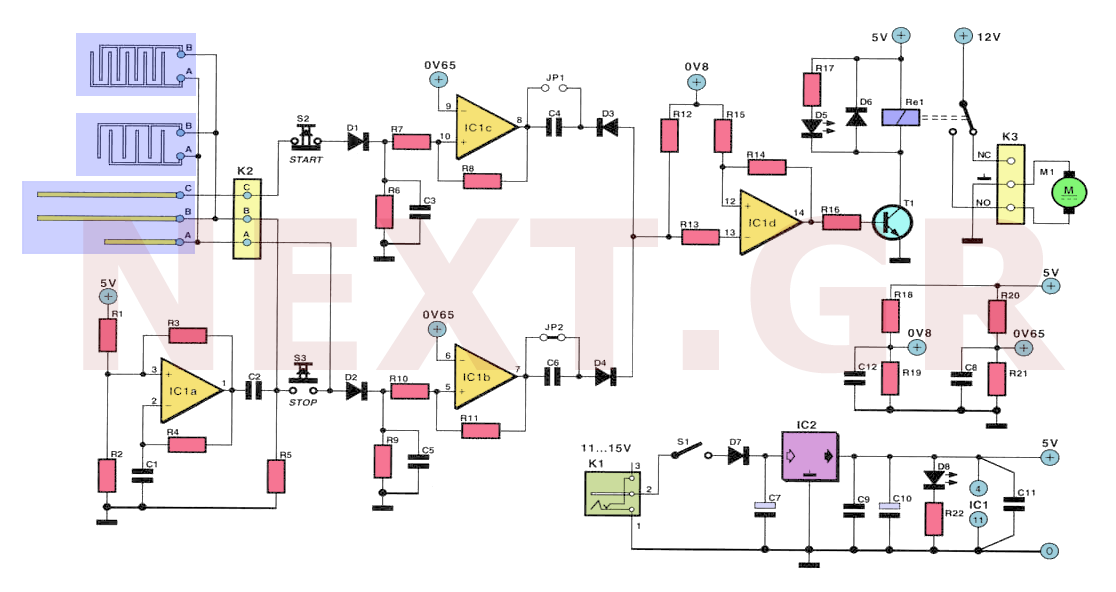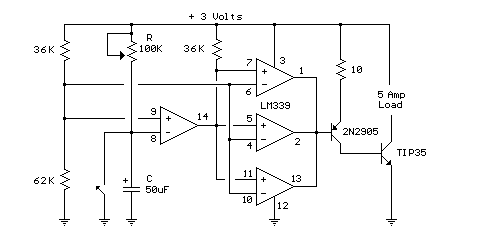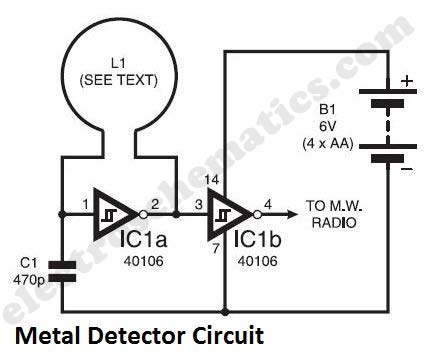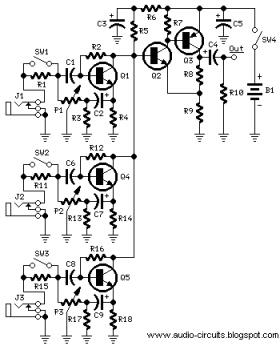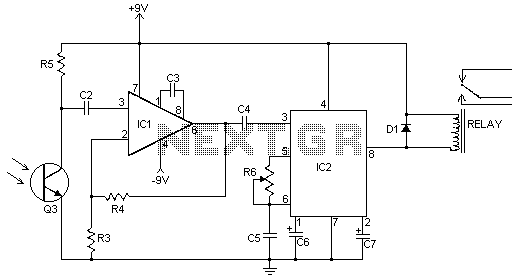
Variable Low-Pass Filter Circuit

This second-order low-pass filter utilizes a 741 operational amplifier and can be tuned from 2.5 kHz to 25 kHz. The circuit is beneficial in audio and tone control applications. R1 and R2 are ganged potentiometers.
The described circuit features a second-order low-pass filter configuration, which is designed to allow signals with a frequency lower than a specified cutoff frequency to pass through while attenuating frequencies higher than this threshold. The use of a 741 operational amplifier provides the necessary gain and buffering for the input signal, ensuring that the filter maintains signal integrity and performance.
The tuning capability of the filter, ranging from 2.5 kHz to 25 kHz, is achieved through the integration of ganged potentiometers, R1 and R2. These potentiometers allow simultaneous adjustment of resistance values, effectively altering the cutoff frequency of the filter. This tunability is particularly advantageous in audio applications where precise control over frequency response is required for tone shaping and signal processing.
In the schematic, the operational amplifier is configured in a feedback loop that includes capacitors and resistors arranged to define the filter characteristics. The capacitors determine the frequency response, while the resistors set the gain and the damping factor of the filter. The ganged potentiometers enable the user to modify both the resistance and the capacitance, allowing for fine-tuning of the filter's performance to suit specific audio needs.
Overall, this low-pass filter circuit is a versatile tool for audio engineers and hobbyists alike, providing a practical solution for managing audio frequencies in various applications, such as equalization, crossover networks, and other tone control systems. This second-order low-pass filter uses a 741 op amp and is tuneable from 2.5 kHz to 25 kHz. This circuit is useful in audio and tone control applications. R1 and 2 are ganged potentiometers. 🔗 External reference
The described circuit features a second-order low-pass filter configuration, which is designed to allow signals with a frequency lower than a specified cutoff frequency to pass through while attenuating frequencies higher than this threshold. The use of a 741 operational amplifier provides the necessary gain and buffering for the input signal, ensuring that the filter maintains signal integrity and performance.
The tuning capability of the filter, ranging from 2.5 kHz to 25 kHz, is achieved through the integration of ganged potentiometers, R1 and R2. These potentiometers allow simultaneous adjustment of resistance values, effectively altering the cutoff frequency of the filter. This tunability is particularly advantageous in audio applications where precise control over frequency response is required for tone shaping and signal processing.
In the schematic, the operational amplifier is configured in a feedback loop that includes capacitors and resistors arranged to define the filter characteristics. The capacitors determine the frequency response, while the resistors set the gain and the damping factor of the filter. The ganged potentiometers enable the user to modify both the resistance and the capacitance, allowing for fine-tuning of the filter's performance to suit specific audio needs.
Overall, this low-pass filter circuit is a versatile tool for audio engineers and hobbyists alike, providing a practical solution for managing audio frequencies in various applications, such as equalization, crossover networks, and other tone control systems. This second-order low-pass filter uses a 741 op amp and is tuneable from 2.5 kHz to 25 kHz. This circuit is useful in audio and tone control applications. R1 and 2 are ganged potentiometers. 🔗 External reference
